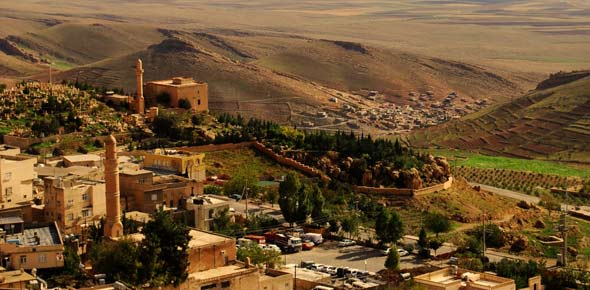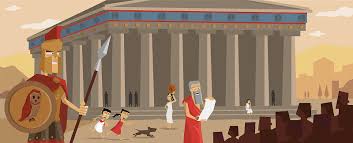CONCEPT OF PROJECT MANAGEMENT
Project Management
The purpose of this article is to highlight the different concepts of project management for the students doing their assignments or research work on the topic of project management. You may also get help from our dissertation writing services offered by the professional team of uk dissertation writers.
Project management as a new subject drives its root from engineering, decision sciences, and operations management and at present theoretical foundation stems from theory of management. The definition of Project management is a procedure which applied to a project to bring an outcome in the shape of product, or service (Project Management Institute, 2004). Its practices are based on physical and insubstantial possessions (DeFillippi and Arthur, 1998).
Project Management in Ancient Mesopotamia
In ancient Mesopotamia we find the concept of Project management in the shape of building irrigation canals and complex structured building at national level. These projects were well planned keeping in view the availability of labor and weather conditions. “In ancient Mesopotamia, work on canals was scheduled at times when people were not involved in planting crops or gathering foods” (Mieroop, 191).
Evidence suggests that the natives of the city themselves were project managers, who had built the houses themselves by using the materials. The places of the Mesopotamian elites were also considered to be large, complex structures which were built by skilled craftsmen (Ireland, 126). Some authors have admitted that the concept of project management is originated from ancient Mesopotamia civilizations which developed with the passage of time and now is being applied at large scale. “Project Management is as old as city wall-building and irrigation canal projects of ancient Mesopotamia……” (Patterson, 127)
Proper documentation was maintained in the finance and loan matters. Lots of receipts of such loans (for these projects individual or national) have been found. These documents show the awareness of Mesopotamian about management and financial matters. Although a lot of development has been made till the modern era and project management has become an organized field.

Project Management in Ancient Egypt
The concept of project management is more than five thousand years old. The ancient Egyptians had a team of professionals, who were responsible for carrying out the project. Researchers are puzzled at the fact that these people were capable enough to build such massive structures by utilizing human capital. Researchers have analyzed and investigated the use of human capital which was used to build these pyramids. For building projects, evidence suggests that these people moved workers in and out and these human capitals work and time were tracked. They recruited seasoned laborers who were adept at cutting stone. When building the Pyramid of Giza, the Egyptians had divided their work force into groups which had a name and a leader (Lewis, 156).
The oldest and the greatest project ever built in Egypt, was The Great Pyramid of Giza, which is found in Cairo and is considered to be the only Seven Ancient Wonders of World, present. The Pyramid stands high at the height of four hundred and eight one foot, with more than two million stone blocks (Ireland, 178). The weight of each block is more than two tons and it is considered to be the tallest structure of the earth. Research suggests that the building of Great Pyramid needed a sophisticated and well planned community in order to complete it. Skills such as setting up, planning, cooking, baking and stone cutting were need to complete the project on time. Frequently, pictorial representations are being used for slaves, who are executing the tasks of stone cutting and its placement. However, this is not a typical management method. get professional essay writing services in uk at the cheap price
Project Management in Ancient Greece
In the ancient Greece concept of management was present but it was not very strong as they believed that future of human beings is in the hands of Gods. Life was very hard and death and injury was a part of life. Due to their beliefs there was no clear concept of planning something, as they believed more in luck and chance. (Webb, 5). However, the Greek civilization developed several project practices which significantly became part of their culture. For example, Artemisia built a tomb for her husband, Mausolus. The structure was part of seven wonders of ancient world. The first technique for project management was calling for artists of that time. In modern times, tenders are placed in newspapers. In ancient times, messengers were sent to Greece to call for talented artists. During that time, talented artists consisted of Scopas, Bryaxis, Leochares, etc who were joined with several craftsmen. The tomb was built on the hill, with enclosed courtyard (Lewis, 205). Existing records show that the masons were expert in their field and master mason was appointed to supervise the work being done in a mega project like king’s palace or tomb. He was also responsible for arranging required labor and building material as well as working according to the map given by client. (Walker, 9). The concept of advisor for a project has also its origin in Greece and Rome ancient civilization. A master mason worked as advisor on different projects on the directions of king or his ministers.
Project Management in Ancient Rome
The Roman Empire is considered to be the most advanced civilization of its time. It lasted for almost 1000 years, the reason for its long lasting is hidden in the flexibility it shows for foreigner civilization, customs, ways of living. So this flexibility had a strong effect on project management. The Ancient Rome had developed several project management practices which were used to support Roman civilization and significantly influences the Roman commerce and business activities for more than thousand of years. However, it should be noted that majority of its technologies and innovations were lost in the early Middle ages. In the nineteenth century, these concepts and technologies were rediscovered (Lewis, 289).
Evidence suggests that the natives of the city themselves were project managers, who had built the houses themselves by using the materials. The places of the Roman elites were also considered to be large, complex structures which were built by skilled craftsmen. Just like Ancient Greece, the survived huge building of Rome show that the masons were expert in their field and it was obviously not possible without the supervision of a master mason whom we can say project manager. In those days, mega project like king’s palace or tomb were assigned to the most expert person in the field.
Project Management in Byzantine Empire
During the Byzantine Empire, several project management practices which were used to support the Byzantine civilization and significantly influences the Byzantine commerce and business activities for more than hundred of years. The Byzantine Empire was considered to be a dark era. However, it should be noted that majority of its technologies and innovations were derived from the Roman era, which were lost in the early Middle ages. In the nineteenth century, these concepts and technologies were rediscovered (Pinto & Kharbanda, 285). The simplest management example come to our knowledge is the building of St Mary in Urgal Catalonia. All the funds raised for this project were administred by the Raymond who was the master mason. (Postan and Post, 774). Constantinople, Alexandria & Antioch were the largest cities of that time in East, they were fully developed with huge buildings, schools and public place which show the concept of project management was present. (Treadgold, 139). Evidence of presence of industry is found in big cities. The main products were cloths, glass and metalwork and these were bartered. So obviously there was concept of management in those factories. There were supervisors, labor and skilled workers. The managers or supervisors were responsible for the proper management in the factory and to export the products.
Project Management in Islamic Golden Age
In Islamic Golden Age the concepts, terms and tools of project management were considered to be complex. It should be noted that project management used during this time had been new and some were old practices. Muslim architects and engineers aided with their craftsmen were responsible for carrying out their innovative techniques. During this time, project management has been developed and grown from several domains which include engineering, construction, etc. According to researchers, project is considered to be a temporary attempt which is taken to innovate and create a product, service or outcome, which is unique in nature. Project management was considered to be the applying the knowledge and concepts of project management in order to bring these outcomes, services or products (James, 109). In order to make project successful, it was essential to adopt the following steps: identification of the requirements, creating and establishing precise and clear objectives, considering constraints of quality, time, resources and scope and implementing specifications, plans and techniques to meet the objectives of the project. Research suggests that architects and engineers were project managers, who had built the houses themselves by using the materials.
Project Management in Crusade Period
During the eleventh century many military campaigns were established to regain the holy land from Muslims. The people who fought for this holy cause were called Crusades. Crusades began in the late eleventh century and lasted several hundred years. As they were fighting for religious cause so they funds were available to them. This funding of the Crusades may surely require a proper system of administration which eventually developed the concept of modern management. Was it possible that these compaigns have been launched and soldiers were armed without effective project management?
In the towns of Crucades; The officers were seneschal, the constable and the marshal. They were responsible of management. Their duties include superintendence of fortress, regulation of the estates and households of the crown. The constable was responsible of all matters regarding judicial combat. We also find idea of temporary employment or self employment i.e contract job in Crusade as they were not part of regular army as it is now in practice and further developing. (Morris & Pinto, 118). The concept of “Freelancers” is also derived from Crusades as they worked independently and for certain period of time. This concept is now becoming more popular and being adopted.
Project Management in Romanesque Period
Romanesque period is famous for its architecture. Master Masons created extraordinary stone buildings in the mountains and brick edifices in the valleys. The project management concept lies in these building projects. The master masons planned to build these, arrange the required resources and labor and supervise these. There was great progress in the field of architecture. Metal work and other crafts developed. Monarchs and churches were built. All this was not possible without proper management. The Romanesque period in France was marked by the rise of the great monasteries, many of which became dynamic centers of artistic creation. The notions of pilgrimages and crusades took root, resulting in the circulation of people, ideas, and works of art and contact with the Byzantine and Muslim worlds. This, in turn, fostered a revival of learning.
Project Management in Gothic Period
The Gothic period began from the middle of twelfth century. During this period new commercial centers came into being and dominated rest of the world. Ideas of trade developed. Great cathedrals and churches dominated the preceding centuries. Gothic art developed in Northern France and spread throughout Europe, becoming the universal style from the 13th through the 16th century. Although the influence of Romanesque architecture had spread beyond France, Gothic was the first French style to dominate Europe.
Project Management in Renaissance Period
The Renaissance Period started from mid-fourteenth century and lasted to mid-sixteenth century. It was the change period among the Medieval Era and the modern world. The meaning of word renaissance is revival or rebirth. This was a golden period of enormous achievements in the fields of arts and sciences. Trade and merchant developed and so as the concept of project management. The concept of democracy and liberty were introduced. This concept let to the freedom of choice of trade in the modern management. The concept of bonded labor or forced labor diminished due to the humanism concept. The concept of capacity building was also introduced in the Renaissance Period.
The management ideas of Greek and Roman philosophers were implied for the betterment common man. Huge artistic project at individual and national level commissioned in Italy which brought wealth and prosperity for the people. After the collapse of Roman Empire, the Western Europe experienced a decline. However, projects continued in Eastern Roman Empire. In the Western Europe, Cathedrals were built in cities which competed with other pilgrims. With the development of technologies in the Renaissance period, grids, compass, lateen sail, etc were used to make mega projects (Lock, 196).
Project Management in Industrial Revolution
The Industrial Revolution took place in the last decade of eighteenth century when in England first cotton mill established. As there was range of new inventions in industry so numerous factories were established. Behind Industrial Revolution were mainly civil engineers who built the canal and rail networks of the country, making internal federal manufacture feasible. Many allegedly new innovations for example joint ventures and co-located project teams have their foundation and development with the industrial revolution.
In the beginning of industrial revolution, in Great Britain workers suffered a lot. Children were hired to work in factories for long hours. The management concept was seeking huge profit and less benefit for the workers. But this ended with the industrial revolution in America. America introduced new concept of management. The concept of worker’s union was introduced.
After the industrial revolution the project management became an established discipline and adopted on a vast range. New terms such as “modern project management”, “management-by-projects”, and projects (project management) culture and beyond the Gantt chart” have been introduced in the field project management to distinguish contemporary and future forms of project management (PM) from traditional and past forms. These terms, in part, propose the existence of a discipline, “emergent PM” that is characterized by Fangel (1993) as being “broader in its application, concepts and methods than traditional PM”. PM styles of leadership, Lewis et al. (2002) conclude that in the “tough, dynamic and demanding” world of new product development projects, traditional models proposing an either/or style of PM are no longer appropriate. Likewise, in outlining the inadequacies of traditional forms of PM in today’s global markets, which are characterized as being “saturated, hyper-competitive and fast-moving”, Maylor (2001) states that a new set of normative models of PM practice and performance are needed in place of the traditional models.
The ideas of capacity building, emergent project management, and focus on achievement of targets, distribution of work are the fruits of industrial revolutions. Different theory of project management has been introduced. Due to establishment of factories people in a large number migrated to cities to get employment. And thus new techniques of management with the arising problem found. With the rising workers competition started and in this atmosphere better salary packages and bonuses on better performance was introduce. You may also like to read our blog on the topic of how to write doctoral dissertation






